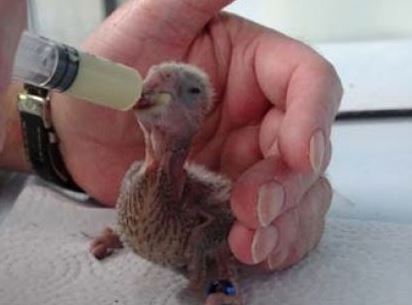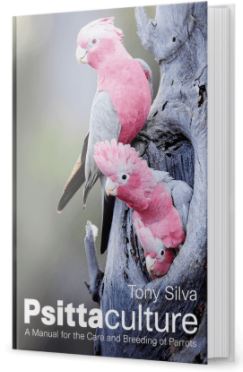Parrot hand-rearing: Awesome Priced Advice, Caring, Tips
We asked Tony about parrot hand-rearing.
“What is the best technique for parrot hand-rearing?” – by Tony Silva

Hand-rearing has long been practiced by native communities, who would take parrots’ nestlings from nests to rear. The birds would be kept as pets in the village, would be gifted to friends or visitors, or would be traded. Many of the parrots that reached Europe from the 16th century on and the USA from the 18th century forward were tame, having been acquired primarily by sailors as trade items from villagers, who collected and reared the chicks principally on a gruel of rice in Asia and boiled corn or manioc in the neo-tropics.
These food items were chewed and the chicks were often fed directly from the mouth – a practice that can still be seen in many remote areas of South America. The nutritional value of these foods is very questionable but the tenacity of the parrots to survive is testament in the many birds traded in the past or kept as pets in villages in this modern day.
Early days
Velma Hart, Ken Wyatt, Ferne Hubbel, and others realized that they could increase production or the likelihood of survival in the chicks if they removed them from the nest at an early age. This practice continued to evolve in aviculture in the USA, reaching its zenith in the 1980s and 1990s. In Europe and Australia, it was received far later. Indeed when I lectured in Australia in the early 1980s many questioned the value of parrot hand-rearing. One noted breeder even argued that if the chicks were not reared by their parents they would be inferior. Some today, after so many generations of hand-reared parrots, still argue as to the suitability of such birds as future breeders.
Future breeders
Parrots that are to become future breeders should be reared with other birds, preferably of the same species, offered enrichment to allow them to develop natural skills inherent in the species and not imprinted. These are key principles to ensure that the birds will be able to reproduce without any abnormal behavior.
How the chicks are hand-reared depends on the country and breeder. In Honduras, during the years that hundreds of nestling Yellow-naped Amazons Amazona auropalliata were exported, the chicks were fed from a crimped can. In Argentina, it was widely common to feed Blue-fronted Amazons Amazona aestiva using a plastic oil can with a protruding tip. In aviculture, hand-rearing is done using far more advanced equipment.
Parrot hand-rearing In modern aviculture
In modern aviculture, most hand-rearing is usually done using a spoon or syringe with or without a rubber catheter or metal gavage needle attached. Which instrument is best is a question recently posed to me. The answer is both. I believe chicks should be started with a spoon with the sides crimped upwards to create a funnel. This allows the chicks to swallow at their pace and to develop pumping skills.
In many parrots, soft bulbous pads on the sides of the mandible stimulate feeding when touched. The spoon, if crimped properly, does exactly this. As chicks age and require more food or become more difficult to feed, the spoon can be replaced by the syringe, which allows food to be discharged via a catheter or gavage needle directly into the crop.
We switch from a spoon to a syringe after the chicks are about 7 days old. When we feed with a syringe, we always discharge some food in the mouth, to ensure the chick can taste and swallow some food as would occur naturally. In hand-rearing hygiene is key. The syringe can be more difficult to clean, but if hot soapy water is pulled into the syringe, it is swished around and discharged, the interior can be left free of any of the oily residues in the formula.
Tony’s book Psittaculture, is available from:

ALL TONY’S ARTICLES ARE AVAILABLE IN THIS eBook, available to subscribers only.
Click on cover to see what you receive for subscribing:




